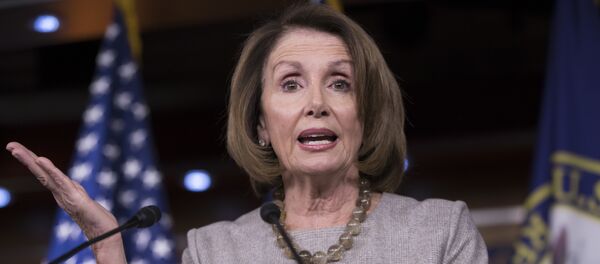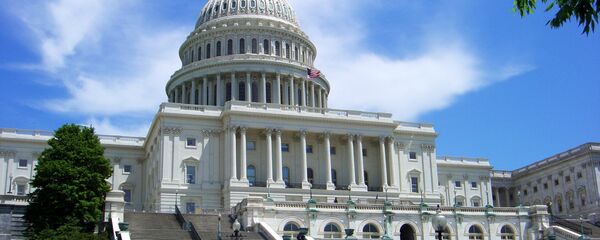A massive spread of opioids, most notably, crack heroin, amongst many US working class communities, has devastating effects to the quality of the US workforce, contributing to low labour participation rate and dismal low labour productivity, thus undermining President Donald Trump's agenda to ‘buy American, hire American'.
The strength of the US labour market has thus far failed to produce any substantial gains in salaries and wages, consumer spending, and broader economic growth. According to the US Labor Department, whilst unemployment rate is currently at its two-decade lowest at 4.4 percent, US labour participation rate (working age people who have a job or actively looking) is at its lowest since the early 1960s, at 62.8 percent.
According to a report by the US financial enterprise, Goldman Sachs, the use of opioid drugs is amongst the main factors devastating US workforce, primarily, the ‘prime age' men, who are unwilling or unable to work. The opioid epidemic has thus become a major concern for not only the US employers, struggling to hire enough workers, but also to policymakers and even central bank planners, concerned with the breakdown of transmission between the solid macro figures, and the still weak real economy.
There are multiple reasons why the labour participation rate collapsed as dramatically during the post-crisis recovery. Amongst them were the Obama administration-sponsored creation of jobs that were mostly low-paying jobs, introduction of multiple social benefit programmes, and cheap credit, Yet, as the American worker felt increasingly disincentivised to work, not least due to the evaporation of well-paying mining and manufacturing jobs, the use of opioids demonstrated a stunning rise.
According to the Center for Disease Control and Prevention, the US are is currently in the midst of an "unprecedented opioid epidemic". Started Having started as prescription painkiller use and abuse back in the 1990s, the heightened opioid use has by now evolved into a sweeping pandemic, characterised primarily by the rising use of crack heroin by the ‘prime age' working class men.
"The opioid epidemic is intertwined with the story of declining prime-age participation, especially for men," David Mericle of Goldman Sachs said. The opioid pandemic entails "significant costs both to employers and the public sector," he added.
In early 2017, Federal Reserve Bank of Atlanta observed, some 1.8 mln American workers were not participating in the labour market because of "other", or unspecified reasons, meaning they are not pursuing education, disabled, taking care of a family member, nor retired. Out of these respondents, scome 881,000 people said they had taken an opioid-based drug the previous day. Thus, drug addiction is hampering the US labour market, and is part of the reason the US workforce is not at this point driving a robust economic expansion.
According to a separate report from the Substance Abuse and Mental Health Administration, about 2.7 mln working-age Americans practiced painkiller abuse in 2015, and another 236,000 were active heroin users. Albeit these figures are only a small portion of the 160-million US workforce, out of the roughly 7 million people currently out of work, opioid users constitute a significant share, between 30 percent and a half.
"Unemployment is associated with higher rates of tobacco use, heavy alcohol use, illicit drug use, alcohol use disorders, and illicit drug use disorders," a 2015 study (https://www.ncbi.nlm.nih.gov/pmc/articles/PMC4127107/) by a group of researchers led by Wilson M. Compton of the National Institute on Drug Abuse of National Institutes of Health, reads.
The rife unemployment that was a feature of the post-Great Recession United States has definitely played its role, but the spread of illicit drugs, on the one hand, and the rising demand for opioids amongst the American public, is a more complex issue.
Now that President Trump is aiming to restore the US industries decimated by the years of weak recovery, and deal with drugs and crime, the amount of available workforce to uphold Trump's agenda is dismally low. How does one ‘hire American' when there's no one to hire left?
Now, even American workers out of work, but actively looking, are struggling to get a job. The reason, according to the Federal Reserve report: they failed a drug test.
"I do think it (crack heroin pandemic) is related to declining labour force participation among prime-age workers," Federal Reserve Chairwoman Janet Yellen said in her Congress testimony last week. "I don't know if it's causal or if it's a symptom of long-running economic maladies that have affected these (working class) communities and particularly affected workers who have seen their job opportunities decline."
Meanwhile, as US manufacturing has started to feel better recently, employers from the Rust Belt and other traditionally industrial regions have reported the lack of qualified workforce.
"Twenty percent of the people are failing (drug tests)," Cary Quigley, president of Lake City, PA plastic fabrication producer, said. "We're seeing positive tests anywhere from marijuana through amphetamines, right all the way through crystal meth and heroin."
Now many US employers are unable to find workforce in the (mostly corrupted by the years of social benefit-fuelled idleness and devastated by drugs) traditional American working class communities. President Trump's agenda of resuscitating the US industries is facing a severe challenge, which can be addressed by the method of last resort: immigration reform.





